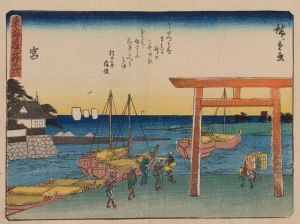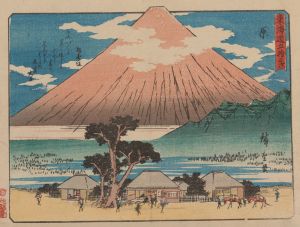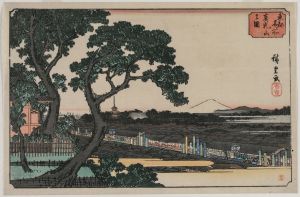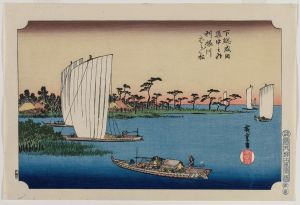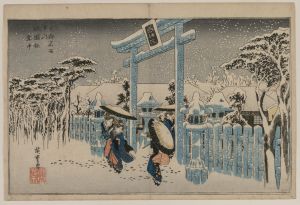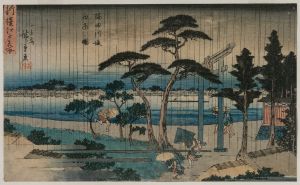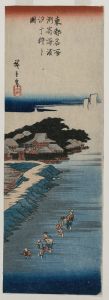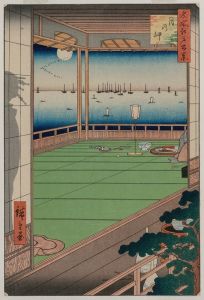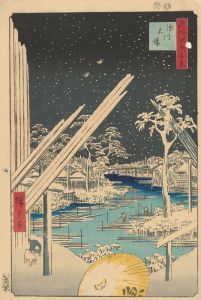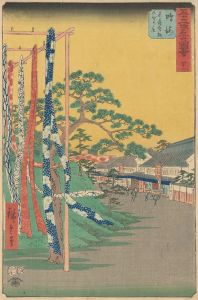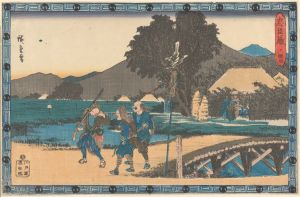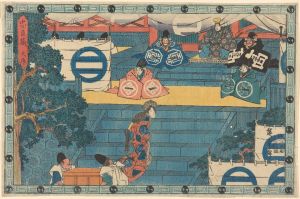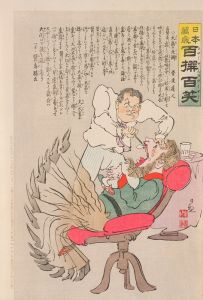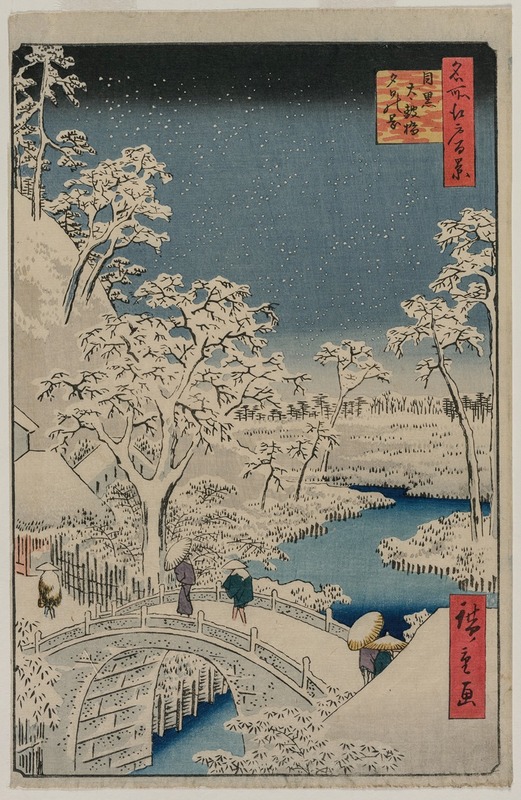
Picture of Twilight at the Drum Bridge in Meguro, from the series 100 Views of Famous Places in Edo
A hand-painted replica of Andō Hiroshige’s masterpiece Picture of Twilight at the Drum Bridge in Meguro, from the series 100 Views of Famous Places in Edo, meticulously crafted by professional artists to capture the true essence of the original. Each piece is created with museum-quality canvas and rare mineral pigments, carefully painted by experienced artists with delicate brushstrokes and rich, layered colors to perfectly recreate the texture of the original artwork. Unlike machine-printed reproductions, this hand-painted version brings the painting to life, infused with the artist’s emotions and skill in every stroke. Whether for personal collection or home decoration, it instantly elevates the artistic atmosphere of any space.
"Picture of Twilight at the Drum Bridge in Meguro" is a woodblock print by the renowned Japanese artist Andō Hiroshige, part of his celebrated series "One Hundred Famous Views of Edo" (Meisho Edo Hyakkei). This series, produced between 1856 and 1858, is a quintessential example of ukiyo-e, a genre of Japanese art that flourished from the 17th through 19th centuries. Ukiyo-e, which translates to "pictures of the floating world," often depicted landscapes, tales from history, the theater, and scenes from everyday life.
Hiroshige, born in 1797 in Edo (modern-day Tokyo), was a master of landscape prints and is often compared to Katsushika Hokusai, another prominent figure in the ukiyo-e tradition. Hiroshige's work is characterized by its poetic use of color, innovative compositions, and ability to capture the transient beauty of nature and urban life.
The "One Hundred Famous Views of Edo" series is particularly significant as it captures the essence of Edo during the late Edo period, a time of relative peace and prosperity under the Tokugawa shogunate. Each print in the series highlights a specific location in Edo, offering a glimpse into the cultural and natural beauty of the city. The series was published by Uoya Eikichi and became immensely popular, influencing both Japanese and Western art.
"Twilight at the Drum Bridge in Meguro" is one of the prints in this series. The Drum Bridge, or Taikobashi, is a notable landmark in Meguro, an area in Edo known for its scenic beauty. The bridge's name is derived from its shape, which resembles a taiko drum. This print captures the serene atmosphere of twilight, a time of day that Hiroshige often depicted to evoke a sense of calm and reflection.
Hiroshige's use of color in this print is particularly noteworthy. The subtle gradations of blue and grey convey the fading light of dusk, while the silhouettes of trees and the bridge create a harmonious balance within the composition. This ability to evoke mood and atmosphere is a hallmark of Hiroshige's style and contributes to the enduring appeal of his work.
The "One Hundred Famous Views of Edo" series, including "Twilight at the Drum Bridge in Meguro," had a significant impact on Western art, particularly during the Japonisme movement in the late 19th century. Artists such as Vincent van Gogh and Claude Monet were influenced by Hiroshige's compositions and use of color, which can be seen in their own works.
Hiroshige's prints continue to be celebrated for their artistic and historical value, offering insight into the landscapes and urban life of Edo. "Twilight at the Drum Bridge in Meguro" remains a testament to Hiroshige's skill in capturing the ephemeral beauty of nature and the changing times of day, making it a cherished piece within the rich tapestry of Japanese art history.





